State broadcasting / Global
Presenting the nation
An explosion of state-funded English-language news channels are attempting to transmit not just the news but their country’s brand. From Moscow to Mumbai we report on the new broadcast empires and ask if this is just propaganda disguised as programming.
The live footage of the second plane arching into the second tower on September 11 2001 was a watershed, not only as a display of Al-Qaeda’s shocking ambition, but for how news would be tendered to western viewers. A near cinematic act of terrorism and its continuing fallout gifted rolling news channels a captive audience, vulnerable not only to the next much-feared attack, but to hyperbole, bias and scaremongering.
The successful launch of Al-Jazeera English in 2006 – broadcast to 100 million homes and hotel rooms – has softened the broadcaster’s image and gently persuaded many that market-leading CNN’s US-centric model does not have to be the industry standard.
While Middle Eastern coverage accounts for 40 per cent of Al-Jazeera’s output, investment in state-of-the-art studios, the luring of luminaries such as Rageh Omar and Sir David Frost and bulletins littered with satellite-links display a worldly presence and also enable a useful bit of Arabian brand-building. Who’d have thought Doha would ever become a news hub, let alone Kuala Lumpur? Then again, the same could be said about Atlanta before Ted Turner flipped the switch at CNN.
While Middle Eastern coverage accounts for 40 per cent of Al-Jazeera’s output, investment in state-of-the-art studios, the luring of luminaries such as Rageh Omar and Sir David Frost and bulletins littered with satellite-links display a worldly presence and also enable a useful bit of Arabian brand-building. Who’d have thought Doha would ever become a news hub, let alone Kuala Lumpur? Then again, the same could be said about Atlanta before Ted Turner flipped the switch at CNN.
A-24, the pan-African news channel, is slated to launch late 2008 (see Monocle issue 07), South America’s TeleSUR needs a strong Portugese-language challenger to support Brazil’s worldwide flag-planting and Monocle also believes that Scandinavia’s trusted transparency could launch a very viable Nordic News Network (see Monocle issue 02).
The political and ambassadorial role played by international news channels is considerable and far from accidental. Compared with hosting the Olympics or investing properly in a flag-carrying airline, a news channel is a relatively cheap but insistent way of conveying a national brand. The globally broadcast English language services of Russia Today, France 24, China’s CCTV-9, India’s NDTV 24x7 and Iran’s Press TV are not just for expats to be able to catch breaking news of the latest farmer’s blockade in Boulogne or an Olympic building site in Beijing; they purport to be internationally-focused channels telling the world’s news from a fair, if national, perspective.
A cursory channel-hop, however, reveals a dogged home-turf agenda: CCTV marvels at Chinese temples, NDTV is all cricket and there are no prizes for guessing which station’s correspondent is nodding off at the Moscow Cello Festival. Although France 24 is smart and culturally inclined, much of the programming from its non-American or un-English competitors is little more than badly lit, under-researched and intellectually-malnourished nationalism. One might say that Fox News has a lot to answer for.
That’s all very well for Monocle to say. The following case study on Russia Today in Moscow aims for a fair and balanced assessment of just how fair and balanced your average state-funded international news channel really is. It asks whether this particular station is authoritative and impartial, or if it’s longing to be back in the USSR.

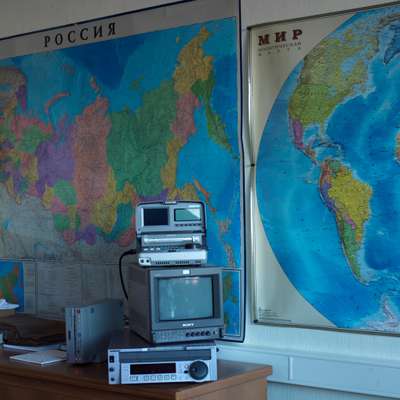
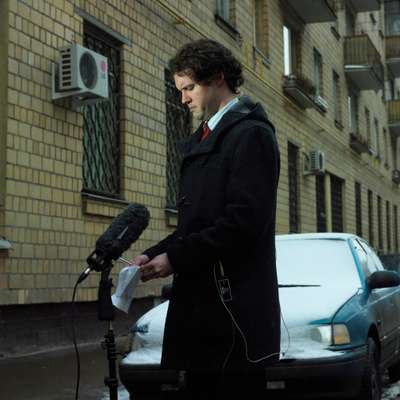
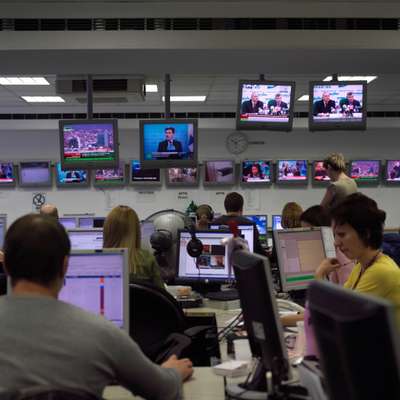

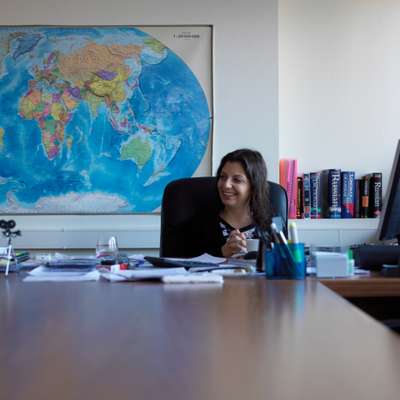
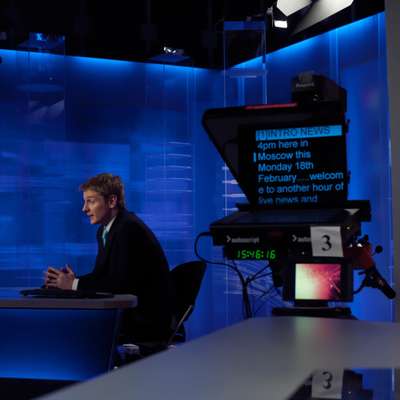
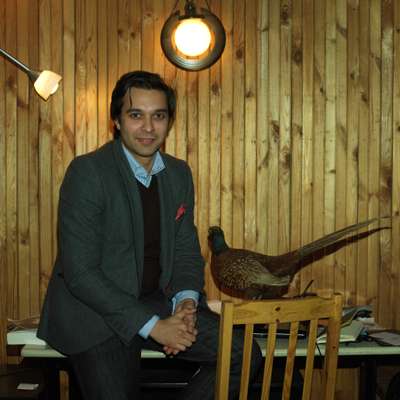

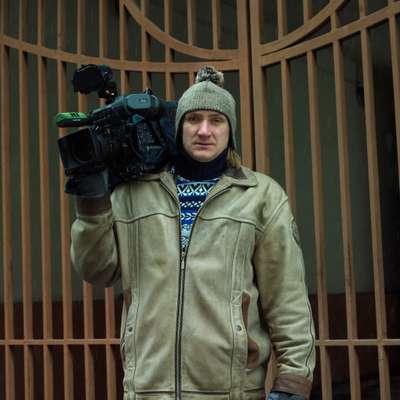
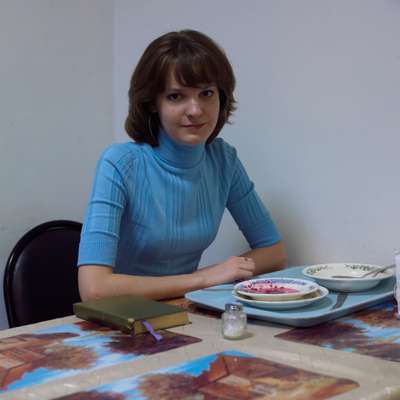

Russia Today
Elections in Armenia, a Russian arms deal with Algeria and Soviet soldiers who secretly fought against the Americans in Vietnam. It’s the international news headlines, but not perhaps as you know them. This is Russia Today, the 24-hour English language news channel set up using Kremlin funds in late 2005 to offset Russia’s negative western coverage.
With over 700 staff and an annual budget rumoured at about €25m, Russia Today is broadcast from inside RIA Novosti, a wire agency located in a hulking Soviet building in central Moscow. The backroom staff are almost entirely Russian, though there is a contingent of foreigners – mainly British – among the correspondents and presenters.
In the two years since it started, the channel has been written off in the western media with sniggers and a “Kremlin TV” label. But, says editor-in-chief Margarita Simonyan, Russia Today is more than simply a Kremlin vanity project.
“When we started, the target audience was people interested in Russia and Russian affairs,” says Simonyan, sitting in her office where 12 screens variously show western and Arabic news channels while the central 13th screen relays Russia Today. “We used to serve investors or Kremlin-watchers that live in Moscow but don’t speak Russian, or those that live abroad but are interested in Russian news because they have, or are thinking of having, business here.”
The channel’s ambition is to reach people in the West who might be “sick and tired of the usual topics”. “Every day it’s the same stories, the same names, the same faces and the same places,” says Simonyan. “Whenever we do something that hasn’t been covered by the major players, we attract lots of attention.”
She cites their coverage of the violent crushing of protests late last year in Georgia, a country the western media was wont to portray as a young democracy battling against an autocratic Russia, but which many even in the West thought was governed by a leader, Mikhail Saakashvili, who had little regard for the niceties of democracy.
“I know a lot of people in Georgia were watching Russia Today to get the news,” says Sofie Shevardnadze, one of the star presenters and the granddaughter of the Soviet foreign minister and Georgia’s second president Eduard Shevardnadze. When we meet, she is in between filming and organising a dinner for President Saakashvili.
The report was balanced, she says. “It was the first time that we got more hits on YouTube than either the BBC or Al-Jazeera,” says Simonyan.
But Russia Today still has a lot of awareness-raising to do. When calling London-based media analysts for their views on the channel, it transpired most of them had never heard of it, while no viewer statistics could be provided.
The most popular YouTube videos sourced from Russia Today tend to be unintentionally amusing reports on alcohol dependency featuring footage of drunks wrestling in Gorky Park or presidential candidate Vladimir Zhironovsky bawling out and brawling with politicians during TV debates. Despite good reviews from Moscow-based westerners, it’s “unlikely” that many in the west would turn to a Russian channel for international news, says Mark Beilby, head of media research with Dresdner Kleinwort in London. “It’s just a prestige thing,” says one western media professional based in Moscow. “There are cheaper ways to reach the expat community in Moscow.”
In a break between news bulletins at the studio, Anastasia Haydulina, a US-educated Russian presenter and reporter, tells Monocle that her most interesting reportage was from the West Bank, where she “drank coffee with Fatah and tea with Hamas” in one afternoon. Neave Barker, a 26-year-old Brit with Pakistani heritage, is one of the star correspondents. In the past year he has reported from Georgia, the UN in New York, and Guatemala. Like most of the correspondents, he didn’t have much previous TV experience. He joined after a stint in print journalism but the fact that the channel lacks experienced journalists isn’t always a bad thing, he thinks. “You can share your ideas, without being intimidated by some old hack.”
Simonyan herself was part of the reason for giggles when the channel was set up. Then 25, the diminutive ethnic Armenian seemed like an insane choice to set up a broadcaster from scratch. She had started out as a correspondent aged just 20. But she insists: “The story of my career might be unusual for countries that have never experienced transitions like we did in the 1990s, but for Russia, my story is not unusual at all.” On 17 February, as Kosovo proclaims independence (see page 42), Russia Today has live satellite link-ups with correspondents in Pristina and Belgrade and a telephone link with the Tbilisi correspondent. The studio presenter has a live discussion with the channel’s chief political commentator, Peter Lavelle, who calls Kosovan independence “a dark day for international law”.
“I am absolutely not told what to say,” says Lavelle, while he has his hair cut in the make-up room. Lavelle, an American with a pro-Russian viewpoint on most foreign policy issues, is ubiquitous. He has his own weekly current affairs programme, and is brought in for breaking news commentary. Lavelle admits to playing devil’s advocate at times, and says he wants to counter the sensationalist reporting of Russia in the West. “Often you find that people don’t even have the basic facts,” he says.
Simonyan is certain there is a market of people in the West who “believe the news shouldn’t just be about Paris Hilton”. The channel has ambitious expansion plans. Last year an Arabic station was launched and now has over 500 staff, and a Spanish-language channel is also in the pipeline. We don’t tell stories in a different way,” says Simonyan. “We just want to tell different stories.”
Braking China
Beijing-based CCTV-9, “Your Window on China and the World”, launched on 25 September 2000. According to Ri Cao, vice-controller of the channel, CCTV-9 aims “to introduce China to the world. We try to show a diverse perspective and to be as authoritative as CNN and the BBC.” CCTV-9 has 370 full-time staff and files stories from 20 bureaux around the world. CCTV Spanish and CCTV French share the same mix of documentaries, news and current affairs. Official viewing figures do not exist but CCTV-9’s signal claims to cover 98 per cent of the world.
Indian takeaway
NDTV 24x7, India’s market-leading English language news channel, launched on 14 April 2003 promising “Experience. Truth First”. Based in New Delhi, the expansion of its Metronation brand will see channels launch in Chennai, Mumbai, Kolkata and Bangalore over the next two years. NDTV 24x7 has over 200 staff across India with correspondents scattered across the US, Europe, Pakistan and Southeast Asia. Stringers work outside these territories. The channel reaches 104.5 million people; mainly on the Subcontinent.
French lessons
Paris-based France 24 was launched on 6 December 2006 to go “Beyond The News”. It has a “French take on covering international news” with more than 1,000 foreign correspondents, . The channel is broadcast in 90 countries in French, English and, since, April 2007, Arabic. President Sarkozy now plans a BBC-style France Monde for “a more imposing French presence”.
View from Tehran
Launched in July 2007, Press TV aims to “break the media stranglehold of the West over the world’s media”. The Iranian channel claims editorial independence has yet to report a single fault of the Iranian regime. Press has over 400 staff with 30 reporters in Washington, New York, London, Beirut and Damascus and offices in the Gaza Strip and Jerusalem


